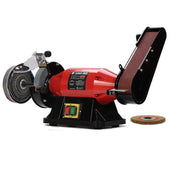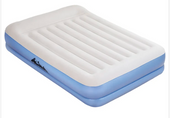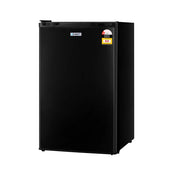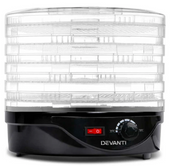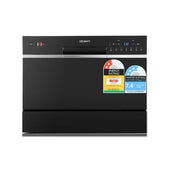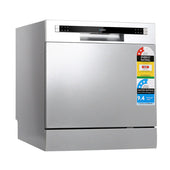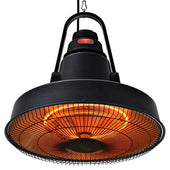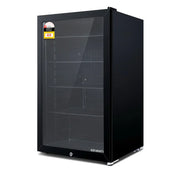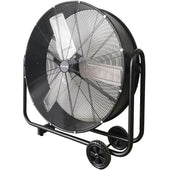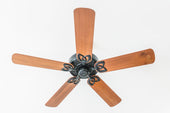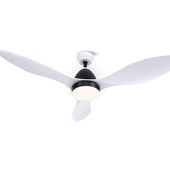Introduction to Kitchen Sink Styles
Kitchen sinks come in a wide array of styles, each offering unique features and aesthetic appeal to suit diverse preferences. From traditional designs to more modern ones, the choice depends on functional needs, kitchen layout, and personal taste. Popular styles include single-bowl, double-bowl, farmhouse, undermount, and drop-in sinks.
- Single-Bowl Sinks: Ideal for compact kitchens and large cookware.
- Double-Bowl Sinks: Perfect for multitasking, such as washing and rinsing simultaneously.
- Farmhouse Sinks: Known for their apron-front design and vintage charm.
- Undermount Sinks: Seamlessly blend with countertops for a streamlined look.
- Drop-In Sinks: Easy to install and versatile.
Different materials, such as stainless steel, porcelain, and composite, further enhance their functionality and style. Atmospheric considerations like durability and maintenance should guide selection.
Why the Right Kitchen Sink Matters
Selecting the appropriate kitchen sink significantly impacts both functionality and aesthetic appeal within a kitchen space. A well-chosen sink enhances efficiency by accommodating various kitchen tasks, such as washing oversized pots or rinsing delicate produce. At During Days, the sink material also influences durability and maintenance, where options like stainless steel resist stains, while granite composites offer exceptional strength.
The sink configuration, including single or double bowls, directly affects how users handle multitasking. Additionally, proper depth minimises splashing and accommodates your cookware. Since the sink often becomes a focal point, aligning its style with cabinetry, countertops, and overall design ensures a cohesive look.
Material Matters: Choosing the Best Sink Material for Your Kitchen
Selecting the right sink material is essential for balancing durability, style, and maintenance needs. Sink materials range from traditional stainless steel to modern composite options, each offering distinct advantages.
- Stainless Steel: Known for its durability and affordability, stainless steel resists rust and stains. It is lightweight, easy to clean, and fits various kitchen styles, though it may scratch or dent over time.
- Porcelain or Cast Iron: These provide a timeless aesthetic with a smooth, glossy finish. While elegant and heat-resistant, they can chip and require careful maintenance.
- Quartz Composite: Durable and resistant to heat and scratches, quartz composite sinks offer a contemporary look and various colour options.
Transitioning between materials depends on preferences, budget, and overall kitchen needs. Careful consideration ensures functionality and style go hand-in-hand.
Top Kitchen Sink Styles for Modern Homes
Modern homes embrace design trends that blend functionality and aesthetics seamlessly. Choosing a kitchen sink style is pivotal in achieving this balance. Below are popular sink styles suited for contemporary spaces:
Undermount Sinks
- Installed beneath the countertop for a smooth finish.
- Easy to clean as there are no edges catching debris.
- Works well with solid surfaces like granite or quartz.
Farmhouse (Apron-Front) Sinks
- Features a deep, exposed front for a rustic yet versatile look.
- Ideal for handling large cookware and heavy washing tasks.
- Adds a statement to the kitchen design.
Integrated Sinks
- Moulded as a single piece with the countertop for a cohesive appearance.
- Provides seamless transitions with work surfaces.
- Options available in materials like stainless steel or resin.
Double-Basin Sinks
- Allows multitasking with separate areas for washing and rinsing.
- Comes in equal or unequal basin configurations.
- Suitable for those who prefer practicality without sacrificing style.
Workstation Sinks
- Incorporates accessories like cutting boards and drying racks.
- Optimises workflow in compact kitchen spaces.
- Perfect for tech-friendly and minimalist kitchens.
Traditional vs Contemporary Sink Designs
Traditional sink designs are often characterised by timeless elements such as rounded basins, porcelain finishes, and intricate detailing. They commonly feature apron-front or farmhouse sinks, which evoke a rustic charm and suit classic kitchen styles. Materials like ceramic, cast iron, and stainless steel are frequent choices in traditional aesthetics.
Contemporary sink designs, on the other hand, focus on clean lines, minimalism, and functionality. Sleek undermount or integrated sinks crafted from modern materials such as stainless steel, quartz, or composite are predominant. These designs prioritise space efficiency and seamlessly complement modern architectural trends.
Choosing between the two depends on compatibility with the kitchen decor and personal preferences.
Understanding Mounting Types: Undermount, Topmount, and More
Kitchen sinks come with different mounting styles, each providing unique benefits. Undermount sinks are installed beneath the countertop, delivering a seamless appearance and allowing easy cleaning as crumbs and spills can be swept directly into the sink. Topmount sinks, also called drop-in sinks, sit on top of the counter, secured by their rim, offering simple installation and compatibility with various countertop materials.
Additional options include farmhouse sinks, which have a front apron and are designed to protrude slightly for aesthetic appeal. Integrated sinks, seamlessly moulded into the countertop, eliminate visible seams for a clean finish while offering customisation. These styles cater to diverse design preferences and practical needs.
The Role of Size and Shape in Kitchen Sink Selection
Selecting the right size and shape for a kitchen sink enhances functionality and complements the overall design. Size determines how efficiently the sink handles tasks like washing large cookware, while shape influences its compatibility with kitchen space layouts.
Key Factors to Consider:
- Size Matters A larger sink suits households with frequent cooking or cleaning needs. Compact sinks work better for smaller kitchens, saving counter space without compromising usability. Measuring the countertop space ensures the sink fits seamlessly.
- Shape Versatility Rectangular sinks are common for their spacious design, accommodating multiple items at once. Circular or oval sinks bring a modern touch and fit into tight spaces. Double-bowl sinks offer versatility, separating different tasks.
- Practical Layout Evaluate installation space and cabinetry setup to ensure the sink complements the kitchen’s workflow. Matching sink shape to the countertop style adds harmony and aesthetic appeal.
Single Bowl vs Double Bowl Sinks: Pros and Cons
When considering kitchen sinks, the choice between single bowl and double bowl designs depends on functionality and personal preference.
Pros of Single Bowl Sinks
- Space Efficiency: Ideal for smaller kitchens due to compact size.
- Ease of Use: Accommodates large cookware like baking trays and stockpots.
- Simpler Maintenance: Fewer corners and edges make cleaning easier.
Cons of Single Bowl Sinks
- Limited Separation: Requires careful planning for multitasking, like rinsing and washing simultaneously.
Pros of Double Bowl Sinks
- Versatility: Allows separation for washing and rinsing or managing dirty and clean dishes.
- Dual Functionality: Offers multi-user convenience, especially in busy kitchens.
Cons of Double Bowl Sinks
- Smaller Bowls: Limits space for washing oversized items.
- Installation Challenges: Requires more counter space and may decrease under-sink storage.
Specialty Sinks: Farmhouse, Apron-Front, and Corner Sinks
Specialty kitchen sinks are tailored for specific aesthetics or functional needs. Farmhouse sinks exude rustic charm with their deep basins, making them ideal for washing oversized pots. Their traditional design often incorporates an exposed front, enhancing a warm, inviting kitchen style. Apron-front sinks, closely tied to farmhouse models, add visual appeal with their protruding front panel, blending vintage aesthetics with modern flair. On the other hand, corner sinks maximise space efficiency in compact kitchens by fitting neatly into corner areas. These sinks are a practical solution for multitasking, as dual basins often allow simultaneous use. Transitioning between styles depends on functionality and design preference.
Customisation Options: Accessories and Features to Enhance Your Sink
Modern sinks offer a variety of accessories and features designed to enhance functionality and convenience. Customisation options enable homeowners to tailor their sinks to suit their needs without compromising style.
Accessories
- Colanders or draining baskets: Ideal for rinsing produce or drying utensils.
- Sink grids: Protect the sink base from scratches while offering stability.
- Cutting boards: Fitted over the sink for efficient food preparation.
Features
- Additional taps: Including filtered water or instant hot water dispensers.
- Soap dispensers: Built-in models for streamlined aesthetics.
- Undermount LED lighting: Enhances visibility for evening use.
These customisation options create a versatile and high-performing kitchen environment.
Durability and Maintenance: Key Considerations
When selecting a kitchen sink, its durability and ease of maintenance should be closely examined. Different materials offer varying levels of resilience against daily wear and tear. Stainless steel is known for its resistance to stains, heat, and corrosion, though it can be prone to scratches and water spots. Porcelain sinks provide a classic aesthetic but can chip or crack if heavy objects are dropped.
Materials such as granite and quartz composites are highly durable, scratch-resistant, and easy to clean with mild soap and water. Choosing a non-porous material ensures resistance to bacteria and stains. Regular cleaning, avoiding abrasive tools, and using protective grids can enhance longevity.
Eco-Friendly and Sustainable Sink Options
Selecting eco-friendly sinks involves considering materials and manufacturing processes that minimise environmental impact. Recycled materials, such as stainless steel or composite granite, are sustainable choices that reduce waste while maintaining durability. Concrete sinks made with reclaimed aggregates offer a unique aesthetic and a lower ecological footprint compared to traditional options.
Water-saving designs are another factor to explore. Integrated low-flow faucets or sinks with built-in greywater systems help promote water conservation in the kitchen. Bamboo sinks, though less common, utilise renewable resources, making them an ideal option for eco-conscious homeowners.
Prioritising certifications like LEED or GreenGuard ensures adherence to environmental standards, confirming the product's authenticity.
Budgeting for Your Ideal Kitchen Sink
When setting a budget for a kitchen sink, it is essential to consider both the upfront costs and long-term value. Kitchen sinks can range widely in price based on material, size, and style.
- Material Costs: Budget-friendly options like stainless steel or composite start around £50, while high-end materials such as fireclay or natural stone can exceed £500.
- Installation Fees: Drop-in sinks are generally less expensive to install compared to undermount or farmhouse styles.
- Additional Features: Consider costs for accessories like customised cutting boards, colanders, or soap dispensers.
- Maintenance Expenses: Durable materials with low upkeep, like quartz, may save money over time compared to high-maintenance finishes.
Careful planning ensures quality without overspending.
Matching the Sink with the Overall Kitchen Design
Choosing a kitchen sink that complements the overall design is crucial for creating a cohesive space. To align the sink with the kitchen style, homeowners should consider the material, shape, and finish of the sink.
- Traditional Designs: Farmhouse sinks with apron fronts pair beautifully with rustic or cottage-style kitchens. Cast iron or fireclay materials enhance the vintage appeal.
- Modern Aesthetics: Sleek, undermount sinks in stainless steel match minimalist designs. Rectangular or geometric bowls work well in contemporary kitchens.
- Industrial Themes: Deep stainless steel sinks with brushed finishes complement functional, raw elements like exposed pipes or concrete counters.
- Classic Kitchens: For timeless designs, composite granite or undermount sinks offer durability while maintaining subtle elegance.
Each sink style should harmonise with cabinet colours, fixtures, and kitchen layout.
Tips for Installing and Replacing Sinks
- Prepare the Space: Ensure the countertop area is clear and clean. Measure the sink cutout precisely to match the new sink. Verify that plumbing connections align with the sink’s configuration.
- Gather Tools: Use a wrench, silicone sealant, putty, and a jigsaw for cutting, if necessary. Have a bucket to catch water during pipe removal.
- Disconnect Plumbing: Turn off the water supply before unscrewing water lines and removing the existing sink. Check for leaks in valves or pipes.
- Secure the Sink: Apply sealant to the edges for an airtight fit. Position the sink carefully, then tighten clamps or fasteners to hold it securely.
- Connect and Test: Reattach plumbing, ensuring all connections are tight. Turn on the water supply to check for leaks and proper drainage.
Conclusion: Making the Best Choice for Your Needs
Selecting the ideal kitchen sink style requires careful evaluation of personal preferences, daily needs, and space constraints. A single-bowl sink suits smaller kitchens and minimal cooking, while double-bowl styles cater to multitaskers. For aesthetics, farmhouse sinks bring a timeless appeal, whereas undermount designs complement modern layouts. Material choices, such as stainless steel for durability or fireclay for character, significantly influence long-term satisfaction. Homeowners should balance form and function, considering factors like budget, maintenance demands, and kitchen workflow. Thoughtful planning ensures the selected sink not only enhances the kitchen's visual appeal but also serves its practical requirements effectively.



